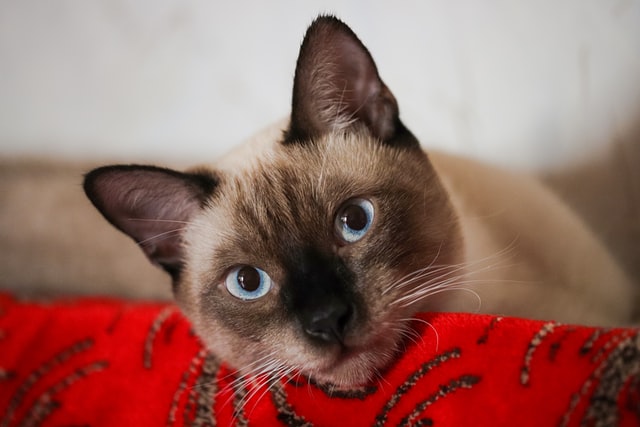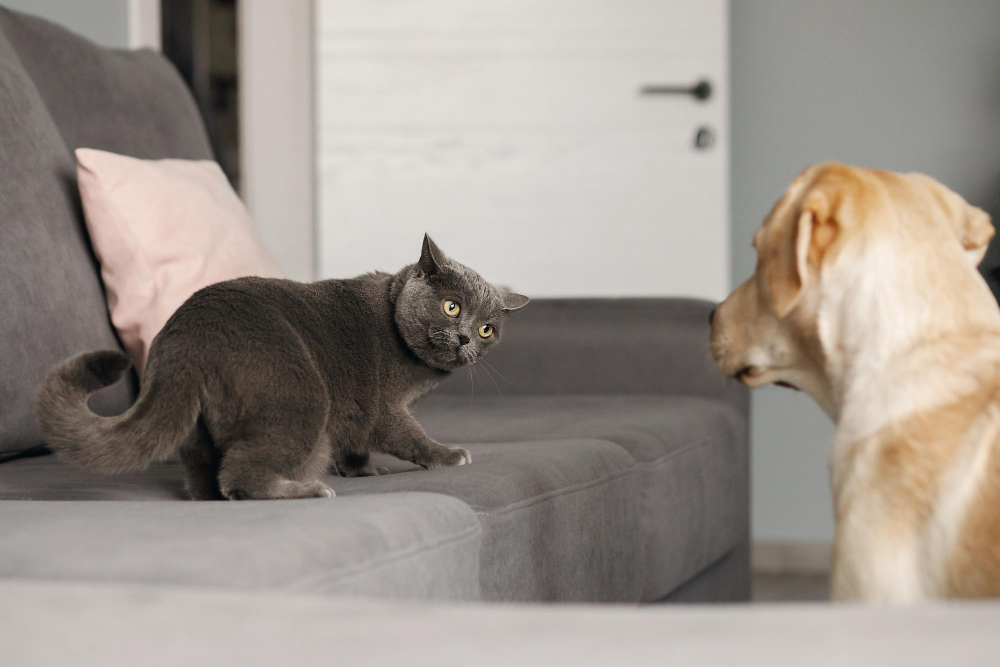Weekday: 8:30am to 6:00pm | Saturday: Closed Sunday: Closed
Weekday: 8:30am to 6:00pm (open until 8pm Tuesday & Thursday) | Saturday: 9am to 2pm | Sunday: 9am to 12pm
As in all walks of life, there are many old sayings in veterinary medicine and one is “a cat is not a small dog”. How true. Cats and dogs are the most common pets we see. Vets often specialise in large or small animals, not really logical as cows are very different to horses and cats very different to dogs.
There are, of course, dedicated equine and bovine practitioners but in the world of small animal medicine, we see cats and dogs in varying proportions. In Sherborne, the clinic definitely has a greater canine case load, not shared by Yeovil where numbers are about equal. So this month, in an attempt to redress the balance, I thought I would share some thoughts about that singular animal, the domestic pussy cat.
Unlike dogs, who have shared our hearths for 40,000 years, earliest evidence of humans and cats co-habiting comes from a 9500 year old grave in Cyprus. Here, human and feline remains were found together, suggesting domestication. Most of us are familiar with ancient Egyptian images of cats that appeared to be important in high society but cats had a practical use, being encouraged to catch rodents around the grain stores of early Middle Eastern farmers. Unlike dogs, humans had very little input into cat breeding, who maintained their independence by choosing breeding partners with no regard to the preferences of mere humans.
Only in the last two hundred years has selective cat breeding been practised, resulting in the pure breeds we see today. I am often drawn to make comparisons between Siamese cats and pet dogs as they seem to share some similar characteristics, being sociable, vocal and facially expressive. I have no doubt that these have been selected to satisfy our own requirements.

Not so your average domestic cat. A relatively recent and shared heritage with wild cats means they have retained their solitary habits. Because of this, cats have not developed the communication skills of dogs, lacking the diverse repertoire of facial expression and having a limited range of body language. Oh, we all recognise an angry cat but how many of us spot the early signs of imminent aggression?
All our vets (me included) and nurses are regularly on the receiving end of feline tooth and claw, delivered so fast and without warning. Not unjustified, to be fair, as placement of an intravenous cannula can be quite painful but as many animals need this often life-saving procedure, our regular use of antiseptics and band-aids will continue. Those who don’t want plasters certainly regret their decision the next time they use the alcohol-based hand gels that now forms part of our daily lives.
So what does this have to do with feline medicine and surgery? Well, quite a lot. The delivery of the practical part of treatment is potentially hazardous (cannulas, taking a temperature or even just asking Pusskins to get out of the cat carrier) but more importantly, the lack of communication cues expressed by cats means our recognition of their pain is difficult. Pain recognition in cats has made huge strides in recent years and we now have a way of scoring pain in an objective way so that we can provide more analgesia. But this isn’t perfect and if there is doubt about the amount of pain a cat is in, we’ll give analgesia anyway just to be sure. If I couldn’t speak and was in pain, I would expect the same treatment.
The feline brain has evolved for a solitary existence, its emotions expressed in a way designed to minimise contact with rivals and so reduce the risk of aggressive meetings.
Visual and vocal communication are close-contact skills and if cats get that close, violence is more likely than not. Instead, cats use long-range strategies such as facial rubbing, urine marking and scratching on objects as ways of signalling their presence. As humans, we just hope its the former if used on us! The rubbing of head, face and tail base on something or somebody delivers a scent that signposts ownership, a clear message for any other cat. As humans, we interpret this as affection and it might well be. Being sprayed with urine is not quite so welcome but it carries the same message! So, cats don’t use Facebook or Twitter, they use the traditional social media of physical and chemical marking to interact with others. When feeling stressed, these displays are often exaggerated and that’s when we vets and nurses become involved, especially if symptoms of ill-health accompany the behavioural signs.

We see many stress-related conditions in cats, manifested as urinating around the house and scratching furniture. Some cats develop skin and gastrointestinal disorders either as a direct result of stress or as a contributory factor. For these reasons, management of stress often forms part of feline therapy. So what is the most common cause of stress for your cat? Usually another cat that has marked its presence in the vicinity of your home. It can also be domestic changes such as new people staying, building work or even changing the furniture or just decorating. They are sensitive creatures! There are several good natural de-stressing remedies available and if the cause cannot be eliminated, they provide at least some relief. Do ask us for advice if you find the internet is its usual confusing mixture of fact and fiction.
Apart from the effects of stress and aggression, what else brings us feline patients? At this time of year external parasites (harvest mites and fleas, mainly, although ticks are an issue) feature on the consult list so check up on your control measures. Call us for advice on the most appropriate for your cat. Infectious disease is a real problem although cat ‘flu and feline AIDS can be prevented with regular vaccination. Middle age and older cats often present with heart disease, kidney dysfunction, diabetes and over-active thyroid glands. We “like” the last two as they are often successfully managed with medication or surgery for the rest of the cat’s natural life. Unsurprisingly for a population of stressed individuals, high blood pressure and its myriad complications is very common in older cats.
Perhaps we all need to learn to relax, kick back, take it easy….and not just give the impression of doing so. Maybe cats and humans are not so different?
Words by Mark Newton-Clarke for The Sherborne Times.
| Cookie | Duration | Description |
|---|---|---|
| cookielawinfo-checkbox-analytics | 11 months | This cookie is set by GDPR Cookie Consent plugin. The cookie is used to store the user consent for the cookies in the category "Analytics". |
| cookielawinfo-checkbox-functional | 11 months | The cookie is set by GDPR cookie consent to record the user consent for the cookies in the category "Functional". |
| cookielawinfo-checkbox-necessary | 11 months | This cookie is set by GDPR Cookie Consent plugin. The cookies is used to store the user consent for the cookies in the category "Necessary". |
| cookielawinfo-checkbox-others | 11 months | This cookie is set by GDPR Cookie Consent plugin. The cookie is used to store the user consent for the cookies in the category "Other. |
| cookielawinfo-checkbox-performance | 11 months | This cookie is set by GDPR Cookie Consent plugin. The cookie is used to store the user consent for the cookies in the category "Performance". |
| viewed_cookie_policy | 11 months | The cookie is set by the GDPR Cookie Consent plugin and is used to store whether or not user has consented to the use of cookies. It does not store any personal data. |